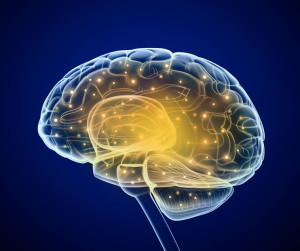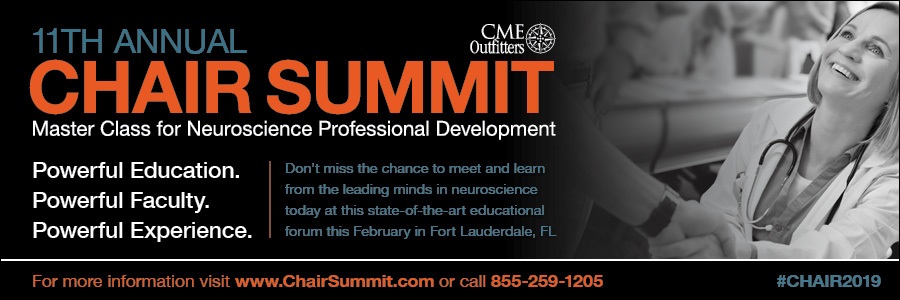
Dr. Mark Gold’s Research You Can Use
As life progresses, most individuals, at some point in their life, lose interest in activities and roles that once used to define and excite them. Anhedonia, however, stretches this loss to its very limits.
Anhedonia is characterized as the utter inability to feel pleasure in response to natural reinforcers or stimuli including food, sex, music, exercise, and social activities. While anhedonia is considered a prime feature of depression and major depressive disorder, it can also occur as part of other conditions such as schizophrenia, psychosis, Parkinson’s disease, anorexia nervosa, and substance abuse disorders.
Over the past few years, anhedonia has garnered increased attention, especially in regard to its inherent association with depression. It has proven to serve as a credible predictor of how a depressed patient will respond to treatment. Typical symptoms include intense sadness, social withdrawal and isolation, negative feelings toward self and others, diminished emotional functionality and general emotionlessness.
Anhedonia and drug abuse
Anhedonia is frequently reported by patients being treated with dopamine receptor blockers-antagonists. Anhedonia and drug abuse may be the rule rather than the exception. It is a common complaint heard in drug rehabs by abstaining patients including those on long-term MATs (Medicated Assisted Treatments). Some studies have suggested that these feelings of anhedonia may be in response to alterations imposed upon the brain’s reinforcement and pleasure systems as a direct consequence of the drugs of abuse.
 Drugs of abuse cause a significant enhancement in the mind’s dopamine signals producing the desired “high” in the user, the euphoric rush that users pursue eliciting their next dose.
Drugs of abuse cause a significant enhancement in the mind’s dopamine signals producing the desired “high” in the user, the euphoric rush that users pursue eliciting their next dose.
This process, however, sensitizes the mesolimbic brain mechanisms that were apparently evolved particularly to attribute incentive prominence to various rewards. Although these circuits were initially thought to encode a particular point of hedonic tone, they are also responsible for producing attention, reward expectancy, disconfirmation of reward expectancy and incentive motivation.
Research proposes that anhedonia can be a result of derangements in the mesolimbic dopaminergic pathways and the associated terminal field, that is, the striatum, amygdala and prefrontal cortex. These disturbances, the persistent feelings of unease, distress, and dysphoria can persist even long after the traces of the drugs have been eliminated.
Drugs normally abused will especially target this very pleasure system and undermines its functionality. It was postulated that instead of anhedonia being an independent entity, it is a secondary symptom or byproduct of brain activity owing to hypodopaminergic states and traits arising from the interaction of genetic traits and epigenetic neurobiological alterations in response to environmental influences.
Interestingly, anhedonia is also experienced by opioid addicts treated with methadone and other opioids. These agonists stimulate opioid receptors and in return these receptors down-regulate and may feedback to inhibit production of natural opioid peptides.
A prominent symptom of cocaine use disorder is anhedonia, which neurobiologically speaking, is developed as a result of a disruption in dopaminergic mesocorticolimbic reward processing. Clinically speaking, anhedonia is a vital factor leading to relapse to cocaine use and hence, represents an important treatment outcome.
Another essential aspect to keep in mind is that depression and substance use disorder are often correlated and co-occurring in addicted patients. This may be another reason why anhedonia is quickly being discovered as a regular feature in substance use disorder patients as well. Depression with anhedonia and depression in patients with chronic opioid use disorders may be the same state.
Unique ‘Feel Good’ circuits in the human brain
Throughout several years, the controversy surrounding the role of dopamine, especially in the derivation of “pleasure,” has caused confusion in terms of distinguishing motivation from actual pleasure. A brain system involved in everything, from addiction to autism, has seemingly evolved differently in people than in great apes.
As reported by a team in the journal Science, although non-human primate brains are essentially identical to humans, the differences between the human cognitive abilities and those of other primates depicts details that run deeper than just surface similarities.
Sousa et al. found various differentially expressed genes, to associate with pleasure related systems. Furthermore, the dopaminergic interneurons located in the human neocortex were absent from the neocortex of nonhuman African apes. Such differences in neuronal transcriptional programs may underlie a variety of neurodevelopmental disorders.
 Researchers examined 247 specimens of neural tissue from six humans, five chimpanzees, and five macaque monkeys to analyze which genes were turned on or off in 16 regions of the brain.
Researchers examined 247 specimens of neural tissue from six humans, five chimpanzees, and five macaque monkeys to analyze which genes were turned on or off in 16 regions of the brain.
While the differences among species were subtle, a remarkable contrast in the neocortices, specifically in an area of the brain that is much more developed in humans than in chimpanzees, was observed.
In fact, these researchers found that a gene called Tyrosine Hydroxylase (TH), an enzyme, which is involved in the production of dopamine, was expressed in the neocortex of humans, but not chimpanzees.
The neurotransmitter dopamine is best known for its essential role within the brain’s reward system; the very system that responds to everything from sex, to gambling, to food, to addictive drugs. However, dopamine also assists in regulating emotional responses, memory, and movement. Notably, abnormal dopamine levels have been linked to disorders including Parkinson’s, schizophrenia, and spectrum disorders such as cocaine abuse and dependence, autism and addictions or Reward Deficiency Syndrome.
Another possibility that stood out was the capability of dopamine to drive humans in their unique ability to pursue rewards that are months or even years away, as suggested by Robert Sapolsky of Stanford University. Sapolsky cites evidence that in humans, dopamine levels dramatically rise when we anticipate rewards that are uncertain and far in the future, like retirement or even the afterlife. This helps explain the motivation that drives people to pursue long-term goals.
The team also found differences in much older areas, including an ancient structure called the cerebellum that seems to have undergone relatively recent changes. Even though there is much left to be understood, the results could eventually help translate the uniqueness of the human brain and what goes wrong in a range of brain diseases.
Treating anhedonia
Anhedonia is complicated and has only just begun to be recognized in recent years. It will take years to fully comprehend the ramifications and causes of these changes in the human brain. Presently, no specific treatments exist aimed at anhedonia. It is typically treated alongside the condition that it is part of, mostly depression.
Evidence suggests that standard depression treatments do little for anhedonia and may worsen the problem by causing emotional blunting, sexual anhedonia and anorgasmia, or the inability to orgasm.
 There has been a recent interest in the anesthetic ketamine as a potential anti-anhedonic medication that has elicited promising results as a treatment for depression, quickly reducing symptoms in both major depressive disorder and bipolar disorder.
There has been a recent interest in the anesthetic ketamine as a potential anti-anhedonic medication that has elicited promising results as a treatment for depression, quickly reducing symptoms in both major depressive disorder and bipolar disorder.
However, the role of ketamine needs to be carefully studied in these post addiction patients for abuse and triggering.
Pleasure systems can be activated by exercise, especially vigorous physical exercise. Transcranial Magnetic Stimulation has emerged as a promising new approach to return these systems to normal. Pro-dopamine nutraceuticals or foods may also be beneficial.
Eating healthy tasty food, sex, socializing, doing good work, watching a movie, building relationships, helping others, accomplishments at school and athletics, consuming and noble efforts to help the community, the country, and the world all need to be prioritized as part of treatment.
Of course, time in treatment may help repair dopamine pleasure systems and reestablish the fundamental right of feeling happiness and optimism among the patients. There is still a long way to go before the many strands of anhedonia are fully understood. However, our knowledge is slowly growing, and, with time, there is hope of a solution to this highly intrusive and debilitating malady.
References:
https://www.medicalnewstoday.com/articles/320737.php
https://www.brainstimjrnl.com/article/S1935-861X(18)30165-7/fulltext
https://www.ncbi.nlm.nih.gov/pubmed/24388670
https://www.npr.org/sections/health-shots/2017/11/23/566034172/human-brains-have-evolved-unique-feel-good-circuits
https://www.ncbi.nlm.nih.gov/pubmed/29293435
About the Author:
 Mark S. Gold, M.D. served as Professor, the Donald Dizney Eminent Scholar, Distinguished Professor and Chair of Psychiatry from 1990-2014. Dr. Gold was the first Faculty from the College of Medicine to be selected as a University-wide Distinguished Alumni Professor and served as the 17th University of Florida’s Distinguished Alumni Professor.
Mark S. Gold, M.D. served as Professor, the Donald Dizney Eminent Scholar, Distinguished Professor and Chair of Psychiatry from 1990-2014. Dr. Gold was the first Faculty from the College of Medicine to be selected as a University-wide Distinguished Alumni Professor and served as the 17th University of Florida’s Distinguished Alumni Professor.
Learn more about Mark S. Gold, MD
About the Transcript Editor:
 A journalist and social media savvy content writer with extensive research, print and on-air interview skills, Sana Ahmed has previously worked as staff writer for a renowned rehabilitation institute, a content writer for a marketing agency, an editor for a business magazine and been an on-air news broadcaster.
A journalist and social media savvy content writer with extensive research, print and on-air interview skills, Sana Ahmed has previously worked as staff writer for a renowned rehabilitation institute, a content writer for a marketing agency, an editor for a business magazine and been an on-air news broadcaster.
Sana graduated with a Bachelors in Economics and Management from London School of Economics and began a career of research and writing right after. Her recent work has largely been focused upon mental health and addiction recovery.
The opinions and views of our guest contributors are shared to provide a broad perspective of addictions. These are not necessarily the views of Addiction Hope, but an effort to offer a discussion of various issues by different concerned individuals.
We at Addiction Hope understand that addictions result from multiple physical, emotional, environmental and genetic factors. If you or a loved one are suffering from an addiction, please know that there is hope for you, and seek immediate professional help.
Published on October 30, 2018
Reviewed by Jacquelyn Ekern, MS, LPC on October 30, 2018
Published on AddictionHope.com

